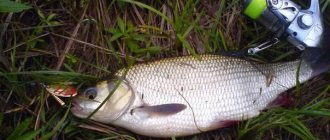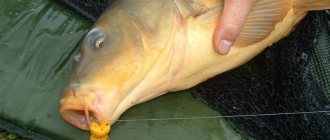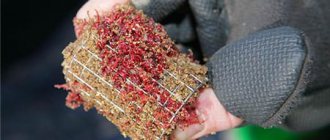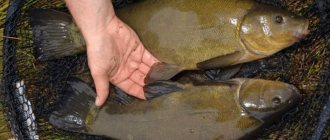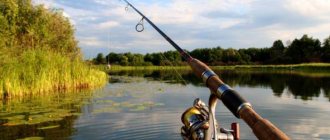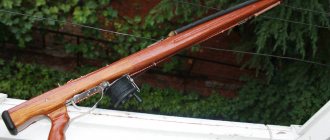Flavoring - myth and reality
There is such a thing as a fishing calendar. If the time of year, weather conditions or other factors influencing behavior and bite are unfavorable for catching a particular type of fish, then you can feed as much as you like and flavor it with all sorts of flavorings, there will be no bite. And if the fishing place or gear has not yet been chosen correctly, then even more so.
It should be said that in some situations they really help to collect fish and increase the bite. Experienced fishermen know that each body of water has its own flavors, baits and baits. And these will not necessarily be new products from the fishing industry.
So what smell attracts bleak? Let us list perhaps the most popular and recommended flavoring agents for the fishing industry in fishing literature and the Internet.
Popular scents for bleak
It is believed that they have a magical effect on bleak. In descending order of popularity among anglers, these are:
- natural and artificial honey,
- anise,
- vanilla,
- sunflower oil,
- cocoa,
- cinnamon,
- various fruit essences,
- strawberry,
- currant,
- raspberries,
- dill
- and even garlic.
Let’s make a reservation right away: original flavored bait mixtures and flavors from well-known manufacturers do not count. Many of them actually work on fish, since they are balanced in terms of the species composition of the fish and were created with the involvement of well-known ichthyologists and experts in the process.
Original means not packaged from plastic bags under “fake” licenses. In principle, it’s not difficult to figure it out - the best cannot be cheap, but then it’s a matter of desires and possibilities.
All other jars of flavors in our fishing stores are mainly made in China, with a small number of individual brands. And they are created primarily chemically.
It is much more profitable and not difficult to make the flavor yourself from natural ingredients, those that are “at hand,” so to speak. They will work just as well on fish and even better.
When do you need a flavoring agent for bleach?
So, when the use of flavorings is justified - when the bleak bite is weak, and the fish are there, but not active.
When the bleak is active and feeding, bait and groundbait are usually enough to keep it in the fishing spot. The bait and bait themselves have an appetizing aroma for the fish, which gathers them into one spot.
Therefore, in most cases, in the warm season, flavorings for bleak are not needed at all, if you choose the right time and place of fishing.
Well, if the time, place and weather for fishing are not entirely suitable, you can experiment with smells; in any case, a few drops of anise won’t hurt, the main thing is not to overdo it and not mix smells together, although...
As an experiment, we offer a video in which the author mixed 25 different flavors, will it be interesting to get a bite? It’s true he didn’t catch bleak, but...
Principles of bait operation
Bleak most often lives near the surface of the water; the presence of fish can be determined by characteristic sounds. As for the deeper layers, this type of fish almost never sinks to the bottom.
If you plan to fish with bleak, the bait must work on the right layers. If the turbidity from the bait appears too low, the fish simply will not notice it and will not react properly.
Depending on the fishing depth, the prepared mass should have the following consistency:
- if fishing is carried out on the surface, the ball with bait is moistened very slightly. Then it will disintegrate immediately after hitting the water;
- so that the bait disintegrates in the middle layers, it is moistened with a large amount of water;
- if the bait must work at deep levels, it should be sent to the bottom using a special feeder.
Experienced fishermen confirm that bleak almost never drops to a depth of less than 50 cm, and small specimens rise so close to the surface of the reservoir that they can be easily seen.
Flavoring for bleak in spring
However, scents are thought to attract fish in early spring. Indeed, after the hungry winter months, the fish “rushes about” in search of food, preparing for spawning and greedily grabs everything that comes in its way.
During this period, the fish’s sense of touch is its active assistant and flavoring agents successfully work to attract it to the angler’s fishing area. After all, there are no insects yet, and in the reservoirs there is nothing special except the reviving “plankton”.
Honey and anise oil or their attractants are often used as flavoring agents for spring bleak. Some people add only salt or sugar to the bait mixture as an independent flavoring or in addition to the main one at the rate of 1 tbsp. spoon per kilogram of dry mixture, and it works!
You can experiment with other flavors, you need to be careful with cocoa powder, it changes the color of the bait so as not to scare away the fish. You can prepare anise oil (anise drops) yourself or buy it.
To make anise oil yourself, you need to crush the anise, pour in refined sunflower oil, seal and put in a cold place for a couple of weeks, shake daily. Then strain... and you're done. This is how dill and other oils are made.
In general, in the spring, a few drops of anise, honey or vanilla and even dill in the bait definitely won’t hurt.
Even at this time, the best flavoring agent is live or grated (crushed) bloodworms or maggots, added to the bait and nothing else is needed, it collects fish perfectly.
Lure
In addition to all of the above, to successfully catch bleak, you also need light, small bait, which creates a hanging food cloud in the surface layer of water, attracting schools of bleak.
I then found out from my fishing neighbors that, without further ado, they poured ordinary dry semolina , which stayed in the water column for quite a long time. Having prepared a bag of semolina just in case and putting it in my pocket, I still bought ready-made fine ground bait for small fish. And as a result, I got an excellent bite from the bleak.
Flavoring for bleak in summer
In summer the situation is different - there is a lot of food, all the living creatures multiply, the fish begin to fatten and put on fat. When fishing at dawn and dusk in favorable conditions, usually only bait is enough. At other times of fishing, you can add vanilla or anise; they are universal for carp.
You can also experiment with cinnamon and cocoa, sunflower oil, as well as strawberries, raspberries, wild strawberries and other berries - crush a few into the mixture or use extracts. In general, according to established opinion, bleak prefers fruity smells at this time.
It’s a good idea to add crushed dry insects to the bait - flies, dragonflies, grasshoppers, or live but crushed ones, including maggots, and catch them with them.
By the way, there is also an excellent June bait, which the bleak always bites on - this is a little blue bug that lives in the “drool” on the leaves of the willow tree. You can also add him and his “drool” to the bait and catch him with it. The bleak takes the bug especially greedily at dawn, without any additional food or flavorings.
In August, the bleak begins its pre-winter feeding, but it already prefers animal baits to plant baits. You don’t have to use flavors during this period, unless you really want to or if the bite is weak.
Bleak. Secrets of catching bleak.
Bleak is one of the most common fish in central Russia. This is not a large, silvery fish with a thin body. The size of the bleak is not large and, unfortunately, is becoming smaller every year. Every year, every spring, a whole army of fishermen makes their feasible contribution to the extermination of the bleak population. The average size of a bleak is 12-15 centimeters, but there are pleasant exceptions. During the fishing process, sometimes specimens up to 20 centimeters in size slip through.
To catch bleak you will need a light rod 4-5 meters long. I prefer a spinning reel. With its help, if necessary, you can cast the bait further from the shore. A light rod is necessary for comfortable conditions during fishing, since the bleak bite can last all day. With heavy gear your hands will quickly get tired. For fishing, I use a light match rod with an inertia-free reel. The advantage of such gear is that it is very light, flexible, allows you to fish at a considerable distance from the shore, and the use of thin fishing line gives an unforgettable experience when landing fish.
The bleak is not distinguished by its outstanding dimensions and the main line thicker than 0.12 mm should not be taken. A leash with a diameter of 0.1 or thinner. I advise you not to skimp on fishing line. Here are some tips for choosing fishing line. In the store, inspect the fishing line against the light. There should be no small cracks on it, this is a sign of stale goods. Tie a simple knot in the fishing line. If the fishing line breaks in the knot without force, then you should refuse the purchase, even if the famous brand is indicated on the label.
I use bleak hooks from 18 to 14 numbers according to the international classification, chemically sharpened from thin wire with a ring at the end. You can use hooks with a spatula; they are no worse. The fishing line is especially thin and has the ability to stretch. The line in the knot seems to creep and the knot can come undone over time, leaving you with a funny little spiral. In order to preserve the hook, you need to apply a drop of glue to the knot or leave a slightly larger tail of the fishing line in the knot.
We select floats in accordance with the fishing conditions. If fishing takes place near the shore, then floats with a carrying capacity of up to 0.5 grams in the shape of an inverted drop with a bright antenna are relevant. To cast further from the shore, you need a slightly heavier float. The float is loaded in such a way that only a bright antenna is above the water. In this case, the bleak almost does not feel the weight of the float and actively takes the bait. If the body of the float is above the surface of the water, the float is not fully loaded, you simply will not see a large number of bites.
Bait for catching bleak
As bait for catching bleak, you can use bloodworms, white bread, maggots, and semolina. The active bleak bite occurs at the beginning of May. During this period, the fish willingly eats bloodworms. Apparently the consequences of the long winter are taking their toll. You have to buy maggots with bloodworms, and this is not always convenient. I opted for semolina mash. A properly prepared semolina sits firmly on the hook, withstands more than one bite, especially when you get small things, cuts through well and is always at hand. In my opinion, the chatterbox is unrivaled when catching bleak. Someone might argue that to use semolina, you need to carry a jar with a lid and apply the bait with a small stick. I agree it's inconvenient. I have been using a large 5 cc syringe for a long time. Fill semolina into a syringe and squeeze out the required amount with a piston. We use the plastic base of the needle as a cap for the syringe. The needle itself breaks off and is disposed of. The bait, located in such a case, is convenient to transport and is convenient to place on the hook. Changing the nozzle is done quickly, which is very convenient during the fishing process.
Bleak responds well to bait. The simplest bait option for catching bleak is white breadcrumbs mixed with sand in a ratio of 1 to 2. Our goal is to attract fish to the fishing spot, and not to feed it. During the fishing process, simply throw small portions of bait to the float and the bite will not take long to arrive. Mud and particles of bait attract bleak. Sometimes you can observe how a flock of bleak, attracted by bait, was frightened by something. The water at the fishing spot literally boils from the escaping fish. A beautiful sight. During the fishing process you will need a cloth. Bleak leaves mucus on your hands, which dries out over time. It is more pleasant to fish with clean hands. When fishing for bleak, you should not relax, as this bait can attract large crucian carp, roach, rudd, and quick and sharp hooks will lead to breakage of the tackle and loss of the catch.
Flavoring for bleak in autumn
In autumn, bleak is cautious, at this time flavorings help to collect and hold the fish.
In the first half of autumn, extracts are used:
- forest berries,
- black currant
- raspberries,
- and apple essence
If it is possible to collect fresh wild berries, then a handful of crushed berries in the bait is enough.
Some fishermen also feed them with berries, periodically tossing a few pieces while fishing to keep the fish. Since in natural conditions it feeds on insects falling into the water from coastal bushes and trees by the autumn winds, it gathers well around the food falling into the water.
When it gets colder, in October - November, flavors with animal ingredients - bloodworms, worms, maggots - are best suited.
Fishing rod equipment
To effectively catch fast and cunning bleak, the angler needs to assemble elegant and sensitive gear. 1. A lightweight fishing rod with a sensitive nod is equipped with the finest fishing line 0.06-0.08 mm. With active biting, it is allowed to thicken the monofilament to 0.07-0.09 mm. 2. A small jig with a contrasting body and a small hook No. 20-24 is tied to it. Attractive bait color combinations are: • black with orange dots; • brown with yellow splashes.
Athletes pay special attention to setting up the nod. He must react sensitively to the slightest touch of the fish. Each angler chooses the color of the nod for himself. As for the material, a strip of lavsan 40-50 mm long works best. Some experienced anglers prefer to use traditional wild boar bristles as a nod.
